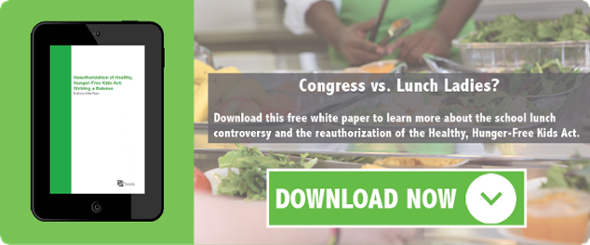
Are you curious about your child's school lunch program? Are the lunches nutritious? Are the lunches affordable? Are there a variety of foods offered? There are so many questions surrounding school lunch today, it's no wonder parents find themselves contemplating whether or not they should pack their child's lunch each day.
The National School Lunch Program
The National School Lunch Program is a federally assisted meal program that has been in existence since 1946, and serves 5 billion lunches to students annually. It is available in both public and private schools. The program provides nutritious meals for free or at a low-cost, for students every day.
Nearly 100,000 schools/institutions serve school lunches to 30.5 million students each day, including:
- 19.8 million free lunches
- 2.2 million reduced price (student pays $0.40)
- 8.5 million full price
Who Qualifies, Who Benefits
To qualify for free or reduced school lunches year-round, parents or guardians must fill out an application at the beginning of each school year, however, parents can fill out an application at any time throughout the year. Families with incomes at or below 130% of the poverty level are eligible for free school meals. For the current school year, the poverty level is $31,525 for a family of four. Those with incomes between 130% and 185% of the poverty level are eligible for reduced price meals. If your income is above 185% of the poverty level, your child will pay full price for school lunch.
The Healthy, Hunger-Free Kids Act
The Healthy, Hunger-Free Kids Act (or HHFKA) passed in 2010, strengthened the nutritional standards for meals served under the National School Lunch Program, the School Breakfast Program, the Summer Food Service Program, and more. When the standards were implemented, many experts thought school lunch participation would be reduced. Some groups, like the School Nutrition Association, reported the standards were too strict to implement without increased costs and food waste.
However, more than 97 percent of schools are meeting these updated standards, and many schools are even adding fresh, local produce into their meals through farm-to-school initiatives (part of the Farm-to-School Grants program). The USDA also revised their commodity requirements when it comes to school meals and added more than 200 nutritious foods to support the new school meal programs.
Supporters of HHFKA say the new school lunch stardards are the first steps in improving America's diet. Not only are children able to avoid disease by maintaining a well-balanced diet each day, they are also learning how to eat healthy for life. A recent study found the improved nutrition standards resulted in students selecting foods that are higher in the nutrients they need for growth and development, and also showed no change in school lunch participation after the nutrition standards were implemented.
School Lunch in 2016
This year, the reauthorization of the Healthy, Hunger-Free Kids Act has been delayed. The Senate Agriculture Committee passed the Child Nutrition Reauthorization Act (CNR) in January, but it still needs to pass the full Senate and House. In this bill, schools will be given more time and flexibility to implement sodium and whole grain standards. It also asks for the USDA to provide best practices on ways to reduce food waste through salad bars and sharing tables.
GA Foods supports healthy child nutrition programs and will continue to update you to potential changes to the law as it goes before the Senate and House for a vote.











